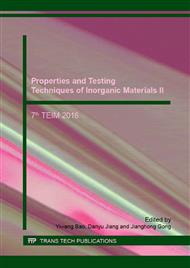p.547
p.553
p.558
p.564
p.569
p.576
p.581
p.586
p.591
The Effect of Pore Structure and Water Absorption on Carbonation Resistance of Sulphoaluminate Cement Foam Materials
Abstract:
Researched the influence of the pore structure and water absorption on the carbonization property with sulphoaluminate foamed cement as an example. The results showed that: Under the same levels of dry density, the smaller pore size, the higher the carbonation coefficient and the integrity of pore had the same effect. After the surface water-proofing, water absorption decreased by 10% on average, the time of carbonizing completely become longer, and carbonation coefficient was increased. And put forward the methods of improving the carbonation resistance properties of sulphoaluminate cement foam materials.
Info:
Periodical:
Pages:
581-585
Citation:
Online since:
January 2017
Authors:
Price:
Сopyright:
© 2017 Trans Tech Publications Ltd. All Rights Reserved
Share:
Citation:


